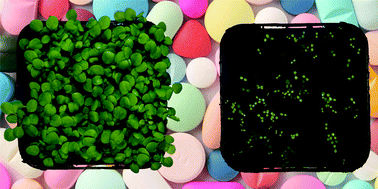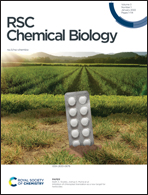Inhibition of chloroplast translation as a new target for herbicides†
Abstract
The rise in herbicide resistance over recent decades threatens global agriculture and food security and so discovery of new modes of action is increasingly important. Here we reveal linezolid, an oxazolidinone antibiotic that inhibits microbial translation, is also herbicidal. To validate the herbicidal mode of action of linezolid we confirmed its micromolar inhibition is specific to chloroplast translation and did not affect photosynthesis directly. To assess the herbicide potential of linezolid, testing against a range of weed and crop species found it effective pre- and post-emergence. Using structure–activity analysis we identified the critical elements for herbicidal activity, but importantly also show, using antimicrobial susceptibility assays, that separation of antibacterial and herbicidal activities was possible. Overall these results validate chloroplast translation as a viable herbicidal target.

- This article is part of the themed collection: RSC Chemical Biology Transparent Peer Review Collection


 Please wait while we load your content...
Please wait while we load your content...